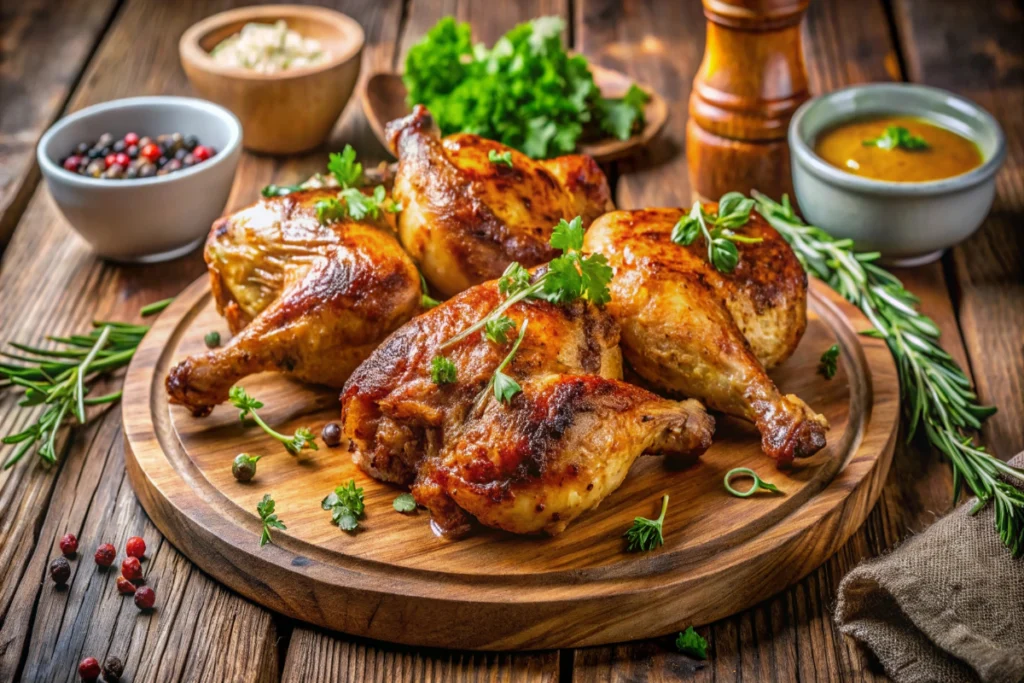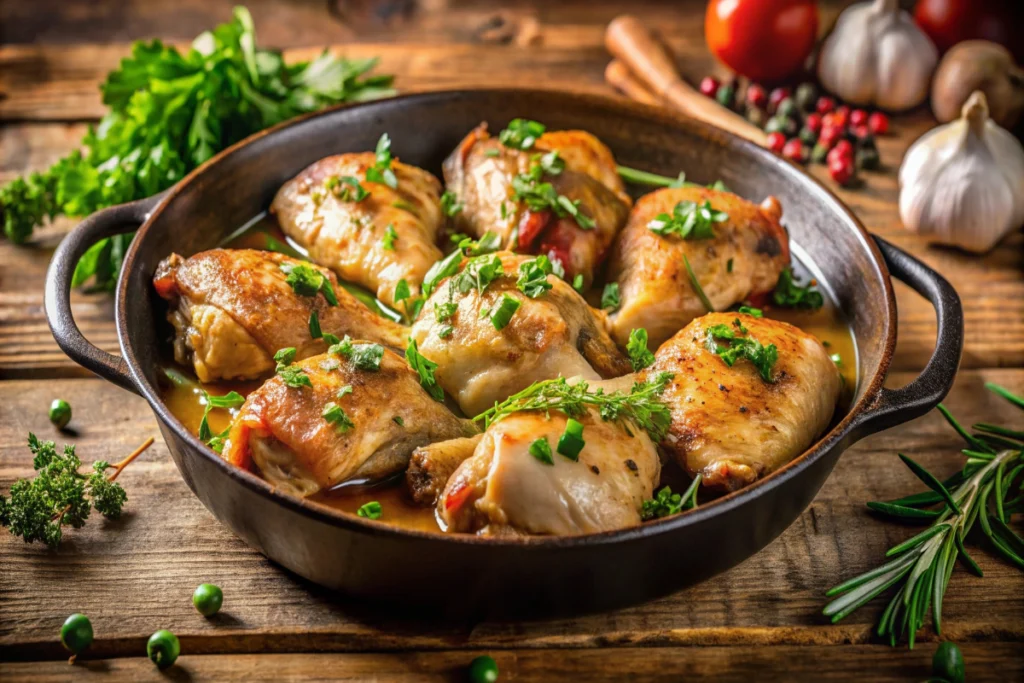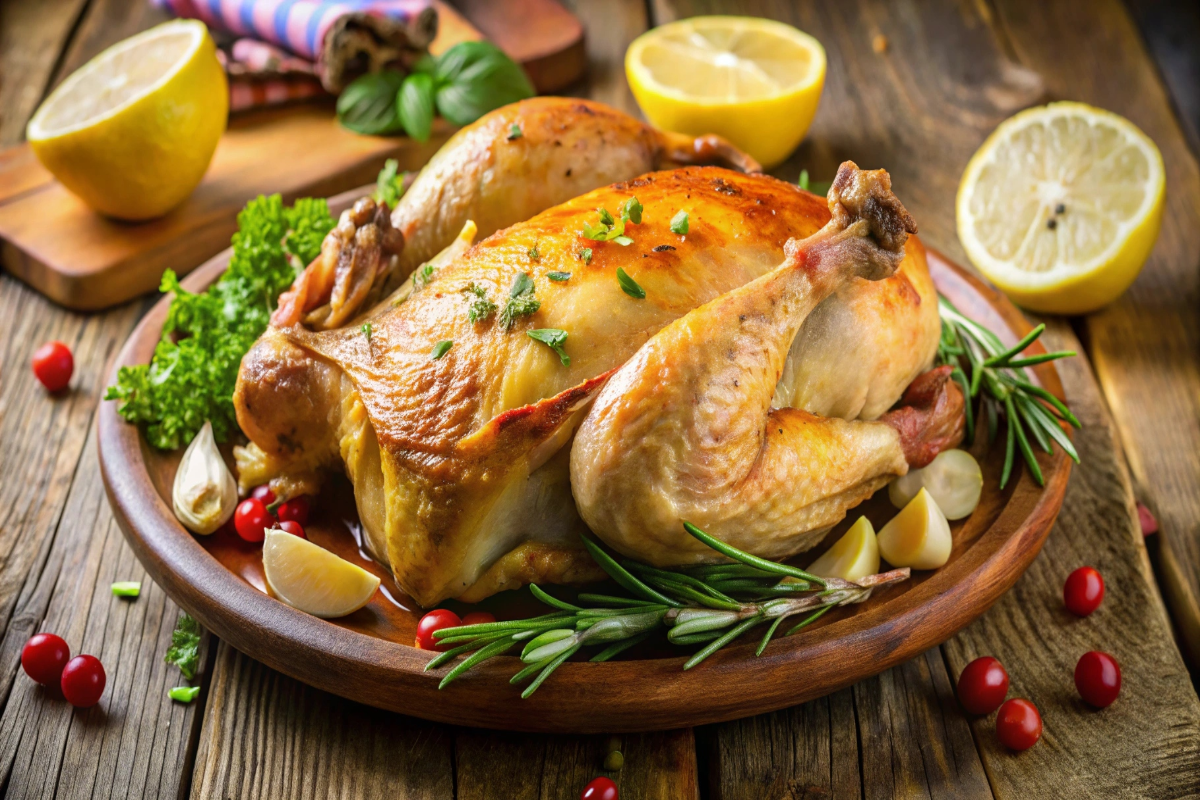Getting tender poultry is crucial for higher-tasting dishes. To attain this, you need to understand the chicken’s nature and the best cooking strategies. Whether it’s chicken breasts or thighs, aim for an internal temperature of 165°F for tender meat. For those interested in innovative cooking techniques, check out how do you cook frozen sausage on a stick? for tips on grilling delicate meats.
Brining, marinating, and sluggish cooking are top techniques for smooth hen. These techniques hold the meat wet and tender. Using acidic components like buttermilk or yogurt enables too. This way, your rooster will constantly be tender and flavorful.
Understanding the Importance of Tenderness in Poultry
Tenderness in poultry is vital for creating flavorful meals. It’s not just about the cooking duration but also about the science of meat proteins and moisture. Proper methods like brining and marinating can enhance tenderness. Similarly, outdoor methods like cooking brats over a campfire add a unique smoky flavor to poultry.
What Makes Poultry Tender?
Several factors influence poultry tenderness, including the type of bird and its diet. For example, pasture-raised birds have more omega-3s, which impact both flavor and tenderness. Additionally, incorporating regional specialties like Conecuh sausage in your poultry dishes can introduce rich, smoky flavors.
The Role of Cooking Techniques
Cooking methods are crucial for tender poultry. Roasting is best for whole birds. Slow cooking works well for thighs and drumsticks. Chicken breasts need a mix of searing and oven cooking.
Using a meat thermometer to cook to 165 degrees Fahrenheit keeps poultry moist and tender.
How Tenderness Affects Flavor
Tenderness greatly impacts poultry flavor. Properly cooked poultry tastes better and is more enjoyable. Fattier cuts are often more flavorful and tender than lean ones like chicken breast.
Understanding tenderness and using the right cooking methods can make your meals unforgettable.
Popular Cooking Methods for Poultry

There are many ways to cook poultry, each with its own benefits and challenges. Roasting is a favorite, giving a crispy outside and juicy inside. It’s a big hit in the U.S., with 8 billion chickens eaten every year.
Grilling adds a smoky taste, while poaching keeps meat moist. These methods are tasty and good for you, as chicken has less fat than beef or lamb.
Raising the Bar with Roasting
To improve roasting, try spatchcocking, splaying, or trussing. These steps can make cooking faster and the skin crisper. Spatchcocking, for example, removes the backbone for even cooking and a crispy skin.
Exploring Other Options
Grilling and poaching are also great choices. Grilling gives a caramelized crust with charred marks. Poaching is low-fat and keeps meat moist. With so many methods, you can find your favorite. Whether it’s roasting, grilling, or poaching, there’s something for everyone.
The Science Behind Cooking Poultry
Cooking poultry well means knowing the science behind it. Heat changes proteins, affecting the meat’s texture and tenderness. If heat is not managed right, proteins can become tough.
Keeping moisture in is key when cooking poultry. Heat can cause moisture to evaporate, making the meat dry. But, by controlling the heat and method, you can keep the meat juicy. The best cooking temperature for poultry is between 140°F and 165°F, depending on the type and desired doneness.
Here are some key factors to consider when cooking poultry:
- Cooking temperature: 140°F – 165°F
- Cooking method: roasting, grilling, poaching, or braising
- Moisture retention: controlling heat and cooking time to prevent moisture loss
| Cooking Method | Temperature | Time |
|---|---|---|
| Roasting | 325°F | 20-30 minutes per pound |
| Grilling | 140°F – 165°F | 5-10 minutes per side |
| Poaching | 140°F – 165°F | 10-20 minutes |
Understanding the science of cooking poultry helps you make it delicious and tender. Control the heat and protein to avoid toughness. Also, keep moisture in for juicy and flavorful poultry.
Best Techniques for Roasting Poultry
Roasting poultry can make your dish truly special. Mastering these techniques will give you a bird with crispy skin and juicy meat. Seasoning is key to the flavor of your roast.
Start by picking the right bird. A 5-pound whole chicken is perfect for roasting. Use an oven at 425°F for crispy skin and juicy meat. For softer meat, try 325°F.
The cooking time changes with the bird’s size and temperature. It can take from 45 minutes to 2 hours.
Key Roasting Techniques
- Dry-brining the chicken by salting it all over and letting it sit exposed in the refrigerator improves juiciness and browning.
- Adding baking powder to the dry brine creates micro-bubbles in the skin, enhancing browning and crisping.
- Basting the chicken with fat like oil, clarified butter, or rendered chicken fat before or during roasting helps with browning and even cooking.
Using these techniques and the right seasoning will make your roast delicious. Letting the poultry rest after roasting ensures it stays tender and juicy.
| Technique | Temperature | Cooking Time |
|---|---|---|
| Dry-brining | 325°F | 1 ½ to 2 hours |
| High-heat roasting | 425°F | 45 minutes to 1 ½ hours |
The Benefits of Grilling Poultry
Grilling poultry gives a smoky flavor that goes well with the bird’s natural taste. Using marinades can make the poultry tender and flavorful. To get perfect grill marks and juicy meat, knowing the right cooking times and temperatures is key.
Marinades That Enhance Tenderness
Marinades are critical for making poultry gentle and tasty. The proper marinades can flip grilled poultry right into a delicious dish. Olive oil, garlic, and herbs like thyme and rosemary are popular alternatives.
Cooking Time and Temperature Tips
Cooking time and temperature are critical for grilling rooster. The instances and temperatures needed range based totally on the poultry kind and favored doneness. Here are some widespread recommendations:
- Chicken breasts: 4 minutes per side, then grill for an additional 18-20 minutes until reaching an internal temperature of 165 degrees F.
- Skinless, boneless chicken breasts: 10-15 minutes, turning every 4-5 minutes, until reaching an internal temperature of 165 degrees F.
- Grilled chicken leg quarters and half chickens: 30-35 minutes, until reaching an internal temperature of 170 degrees F.
Achieving Perfect Grill Marks and Juiciness
To get perfect grill marks and juicy meat, pay close attention and practice. For grill marks, preheat the grill and cook the poultry for the right time. For juiciness, don’t overcook and let it rest before serving.
| Poultry Type | Cooking Time | Internal Temperature |
|---|---|---|
| Chicken Breasts | 22-24 minutes | 165 degrees F |
| Skinless, Boneless Chicken Breasts | 10-15 minutes | 165 degrees F |
| Grilled Chicken Leg Quarters and Half Chickens | 30-35 minutes | 170 degrees F |
By following these tips, you can grill poultry to perfection. Grilling poultry adds flavor and tenderness to meals. With the right techniques, you’ll make dishes everyone will love.
How Poaching Can Help Maintain Tenderness
Poaching poultry is a gentle way to cook that keeps the meat tender. By cooking the bird in liquid, you add flavor and keep it moist. This method is perfect for poaching poultry because it stops the meat from drying out.
The poaching method involves cooking the poultry in a flavorful liquid, like broth or stock, at a low temperature. This breaks down the meat’s connective tissues, making it tender and juicy. To make the flavor even better, you can add herbs and spices to the liquid.
The Poaching Process Explained
The poaching process usually takes 15 to 17 minutes, or until the meat reaches 165°F. It’s important to watch the temperature and time to make sure the meat is cooked right.
Flavor Enhancements: Broths and Herbs
To give your poached poultry extra flavor, use different broths and herbs. Chicken or vegetable broth, along with herbs like thyme, rosemary, or parsley, are great choices. You can also add lemon juice or garlic for a unique taste.
Recipe Ideas for Poached Poultry
There are many ways to use poached poultry. You can serve it with roasted vegetables or a salad. It’s also great in soups, stews, or casseroles. With a bit of creativity, you can make many tasty and noutrision meals using poaching poultry and tender poaching methods.nutritious
Slow Cooking: Tenderness Through Time

Slow cooking is a great way to make poultry tender and flavorful. It breaks down the meat’s connective tissues, making it juicy and tender. This method is perfect for slow cooking poultry, ensuring even heat and moisture.
To get the best results, choose the right cuts of poultry. Thighs and legs work well, while breasts might not. Here are some tips for picking the right cuts and adding flavor:
Best Cuts for Slow Cooking
- Thighs and legs: These cuts are ideal for slow cooking, as they have more connective tissue that breaks down over time.
- Wings: Chicken wings are another great option for slow cooking, as they can be cooked until tender and falling off the bone.
- Drumsticks: Drumsticks are a popular choice for slow cooking, as they can be cooked in a variety of sauces and seasonings.
Tips for Flavorful Slow Cooked Dishes
To add flavor, mix herbs and spices. Onions and garlic can also enhance the taste. Braising or stewing can make a rich, flavorful sauce.
| Cut of Poultry | Cooking Time | Temperature |
|---|---|---|
| Thighs and Legs | 6-8 hours | 275°F (135°C) |
| Wings | 4-6 hours | 275°F (135°C) |
| Drumsticks | 4-6 hours | 275°F (135°C) |
Follow these tips and use the right cuts for delicious, tender slow-cooked dishes. Whether it’s a hearty stew or a flavorful roast, slow cooking poultry is the way to go.
Sous Vide: The Precision Cooking Method
Cooking poultry to the perfect doneness can be tricky. Sous vide poultry solves this problem with its precision. It seals the poultry in a bag and cooks it in a water bath at a controlled temperature. This ensures your dish is cooked just right.
Sous vide cooking is all about precision cooking. Traditional methods can lead to overcooked or undercooked poultry. But sous vide lets you set the exact temperature and time. This means your poultry is always cooked to perfection.
Choosing the Right Time and Temperature
To start sous vide poultry, pick the right time and temperature for your meat. Poultry should be cooked between 145°F and 150°F (63°C to 66°C). Cooking times vary from 1-4 hours, depending on the meat’s thickness. Here’s a table with recommended cooking times and temperatures for different poultry cuts:
| Cut of Poultry | Cooking Temperature | Cooking Time |
|---|---|---|
| Boneless, skinless chicken breasts | 145°F – 150°F (63°C – 66°C) | 1-2 hours |
| Chicken thighs | 145°F – 150°F (63°C – 66°C) | 2-3 hours |
| Turkey breast | 145°F – 150°F (63°C – 66°C) | 2-3 hours |
By following these guidelines and using a sous vide machine, you can cook poultry perfectly every time. It’s a great way to elevate your cooking, whether for a special occasion or a simple weeknight dinner.
Conclusion: Choosing Your Best Method for Tender Poultry
The secret to tender and tasty poultry is choosing the right cooking method. You might like roasting, grilling, or sous vide. Each method has its own benefits that make your poultry dishes better.
Think about the dish you’re making and how the cooking method will add to the taste. Your personal taste and the flavor you want should help you decide. Trying new ways of cooking can also help you find new favorite dishes.
Now that you know more about cooking tender poultry, you can try different methods. This will help you find the ones you like best. Enjoy exploring new cooking techniques and make your poultry dishes even more delicious.
FAQ
What is the role of cooking techniques in achieving tender poultry?
Cooking techniques are key to tender poultry. Brining, marinating, slow cooking, and controlling temperature are important. They affect the meat’s texture and moisture.
How does heat affect the proteins in poultry?
Heat makes proteins in poultry denature. This can make the meat dry if not managed right. Knowing how to keep moisture is crucial for tender poultry.
What are the benefits of different poultry cooking methods?
Each cooking method has its own benefits. Roasting gives a crispy outside and juicy inside. Grilling adds smoky flavor. Poaching cooks gently, keeping moisture in.
How can seasoning and resting impact the tenderness of roasted poultry?
Seasoning boosts roasted poultry’s flavor. Resting the bird after cooking lets juices redistribute. This makes the meat tender and juicy.
What role do marinades play in achieving tender grilled poultry?
Marinades make grilled poultry tender and flavorful. They break down tough tissues and add moisture and seasonings.
How can slow cooking and sous vide techniques help produce tender poultry?
Slow cooking and sous vide use time and precise temperature. They break down poultry’s connective tissues. This results in tender and flavorful dishes.
How can personal preferences and flavor profiles influence the choice of cooking method for tender poultry?
Personal taste and desired flavors guide cooking method choices. Trying different techniques can uncover new favorites.

